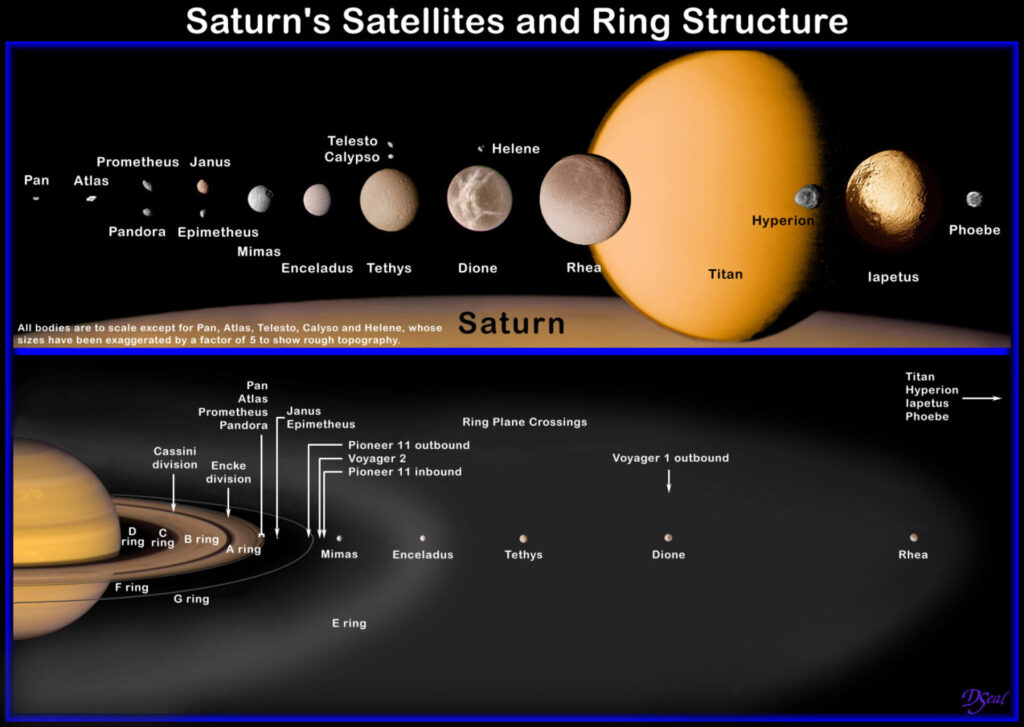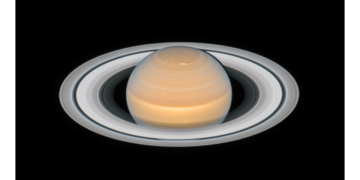The year 2024 brings a unique celestial event that will captivate sky-watchers worldwide: Saturn’s annual opposition. On the nights of September 7-8, Saturn will reach its closest and brightest point in the sky as Earth passes directly between the Sun and Saturn. But what exactly is happening during Saturn’s opposition, and why is it so significant for astronomers and stargazers alike? Let’s explore this event in detail and uncover the science behind this incredible moment.
Understanding Saturn’s Opposition
Saturn’s opposition occurs when Saturn, Earth, and the Sun align in a straight line, with Earth positioned in the middle. This alignment happens once every 378 days, approximately 13 days later each year, due to Saturn’s long orbital period of 29.4 Earth years. During opposition, Saturn is closest to Earth, reducing the distance between the two planets to about 814 million miles. This proximity causes Saturn to appear exceptionally bright in the night sky, making it an ideal time for observation.
From an observational standpoint, Saturn’s opposition is significant because it allows for a fully illuminated view of the planet. Unlike other times of the year, when parts of Saturn may be in shadow, opposition ensures that the Sun’s light fully bathes Saturn, revealing the planet’s features in remarkable detail. As a result, Saturn becomes one of the most prominent objects in the sky, providing an extraordinary sight for both amateur and professional astronomers.
Saturn in the Night Sky: How to Observe
This year’s opposition offers a unique opportunity to see Saturn as it rises in the east at sunset and sets in the west at sunrise. During this period, Saturn will remain visible all night long, providing multiple opportunities for observation. For those who wish to view Saturn with the naked eye, the planet will appear as a bright, yellowish point of light with a magnitude of +0.2, shining steadily compared to the twinkling stars around it.
For a more detailed view, a telescope is highly recommended. According to NASA, a telescope with a 6-inch (150mm) aperture or larger can reveal Saturn’s famous rings and its largest moon, Titan. However, it’s important to note that Saturn’s rings are currently “edge-on” from Earth’s perspective due to the tilt of Saturn’s spin axis. This orientation will persist until the planet’s equinox in 2025, which occurs only every 15 Earth years. Therefore, observers this year will see a flatter, less “open” ring structure, adding a unique element to this year’s observations.
What Makes Saturn’s Opposition in 2024 Unique?
While Saturn’s opposition is an annual event, the 2024 opposition offers a special viewing opportunity. The “edge-on” appearance of Saturn’s rings creates a distinct visual spectacle, as the thin rings may almost disappear from view. This phenomenon results from the way Saturn’s axial tilt aligns with Earth and the Sun, causing the rings to appear thinner from our vantage point. Observers who have seen Saturn in the past will notice this difference and appreciate the rarity of this ring orientation.
Additionally, this opposition occurs as Saturn continues its journey through the Aquarius constellation. By the next opposition in 2025, Saturn will have moved into the Pisces constellation, showcasing the dynamic nature of our Solar System. Observing Saturn during this opposition provides an opportunity to witness the planet in a unique astronomical context, one that will not repeat exactly for another 29 years.
The Science and Significance of Saturn’s Opposition
Saturn’s opposition isn’t just a treat for casual sky-watchers; it’s a valuable time for scientific observation. When Saturn is at its closest and fully illuminated, astronomers can gather data on its atmosphere, rings, and moons with increased clarity. Saturn’s atmosphere, known for its fast-moving storms and intricate cloud patterns, can be studied more effectively during opposition. Observations made during this period can reveal details about the composition, movement, and evolution of Saturn’s atmospheric phenomena.
Similarly, the planet’s rings, composed of ice and rock, present a fascinating subject for study. The current “edge-on” view challenges astronomers to understand the rings’ thickness, particle composition, and dynamics. As the rings gradually open in the coming years, scientists will be able to compare these observations to gain deeper insights into how the rings change over time. These studies are crucial for understanding the processes that govern not only Saturn’s rings but also similar structures around other planets and celestial bodies.
Saturn’s Moons: A Highlight of the Opposition
One of the most captivating aspects of observing Saturn during opposition is the opportunity to view its largest moon, Titan. Titan, larger than the planet Mercury, is a world shrouded in a thick atmosphere of nitrogen and methane. It is the only moon in the Solar System with a dense atmosphere and liquid methane lakes on its surface, making it a prime candidate for future exploration. During opposition, Titan is more visible, allowing astronomers to study its surface features and atmospheric conditions in greater detail.

Titan’s significance extends beyond its sheer size; its surface conditions and atmospheric dynamics provide a unique laboratory for studying prebiotic chemistry. During opposition, researchers can analyze Titan’s atmosphere with greater accuracy, potentially uncovering new insights into the chemical processes that could lead to the formation of life.
The Cultural and Historical Importance of Saturn’s Opposition
Saturn’s opposition has captivated human observers for centuries. In ancient times, Saturn was known as the “slow-moving” planet, symbolizing time, structure, and boundaries in various cultures. Ancient astronomers, without the aid of telescopes, could only track Saturn’s motion and brightness changes, making oppositions significant events for sky-watchers.
Today, Saturn’s opposition continues to inspire awe and curiosity. It reminds us of the vastness of our Solar System and our place within it. The opportunity to view Saturn at its closest and brightest is a humbling experience that connects modern observers with those who marveled at the planet’s beauty thousands of years ago.
How to Prepare for Observing Saturn
To make the most of Saturn’s opposition, consider a few practical tips for observation. Find a location with minimal light pollution, such as a rural area or a designated dark sky park. Check local times for Saturn’s rise and set to ensure the best viewing opportunities. Use a star chart or a mobile app to locate Saturn in the Aquarius constellation, and consider bringing binoculars or a telescope for a more detailed view.
If you have access to a telescope, focus on observing not only Saturn’s rings but also its moons, especially Titan. The changing ring orientation provides a rare chance to see Saturn from a new perspective, and with patience, you may even spot some of the planet’s smaller moons, such as Enceladus or Mimas.
Conclusion: Don’t Miss Saturn’s Spectacular Show in 2024!
Saturn’s 2024 opposition is more than just an astronomical event; it’s an invitation to explore the wonders of our Solar System. As the ringed giant reaches its closest and brightest point, it offers a rare glimpse into the dynamics of planetary motion, ring systems, and celestial bodies that have fascinated humanity for millennia. Whether you are a seasoned astronomer or a casual sky-watcher, this is your chance to experience one of the most awe-inspiring sights in the night sky. So, mark your calendars, gather your telescopes, and prepare to witness Saturn’s celestial dance—a spectacle that reminds us of the boundless beauty and mystery of the cosmos.



















